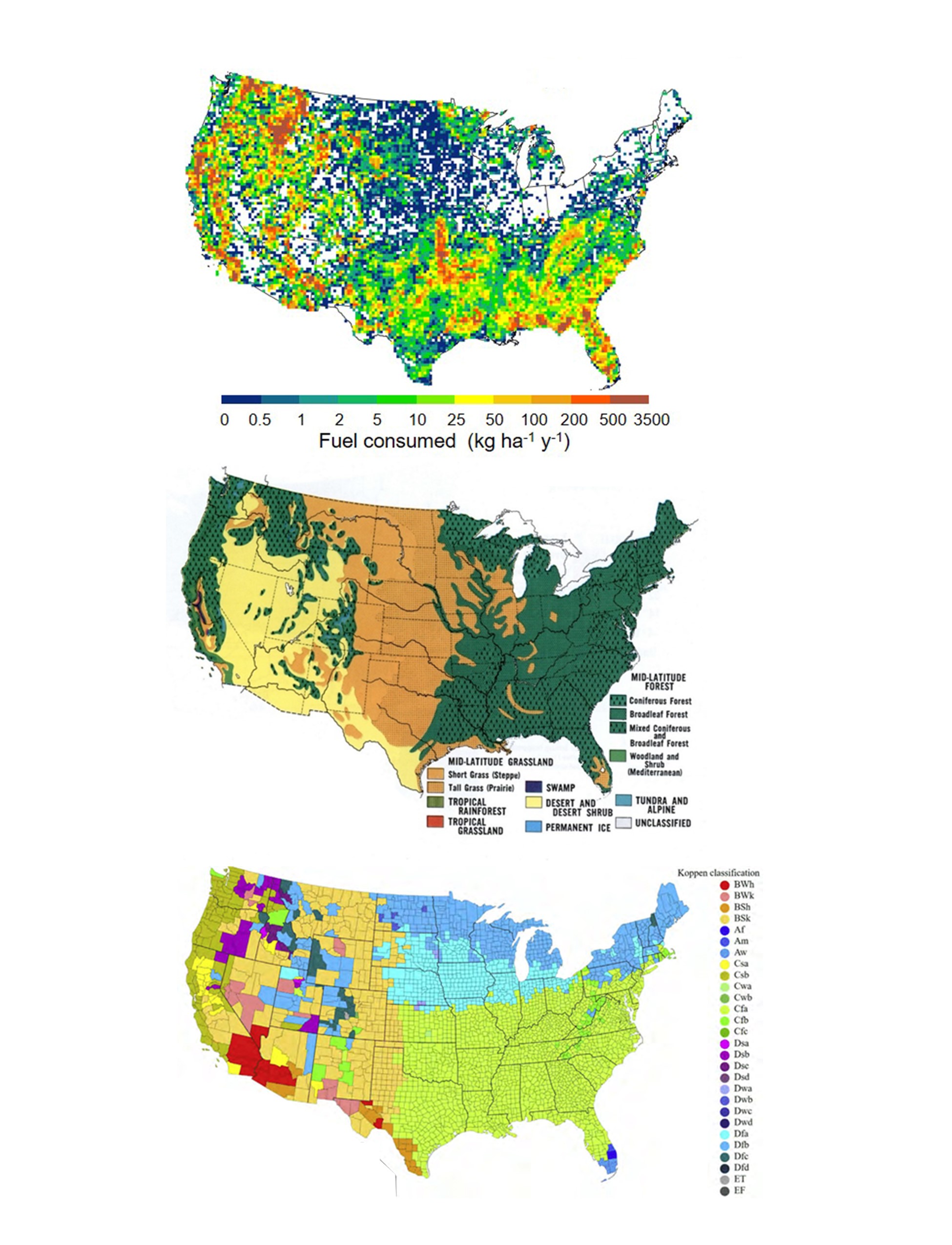Vegetation
Different regions of the U.S. have different wildfire activity primarily because of differences in climate, and climate influences wildfires fundamentally by influencing the type, the density, and the seasonality of vegetation. Although some regions are more susceptible to wildfires than others, vegetation will not burn unless, at some point in time, climate conditions caused it be dry enough to sustain a wildfire. The term fuel refers to vegetation that is dry enough to burn.

The amount and the type of biomass available to burn is a function of soil, land slope, slope orientation, elevation, and climate. For example, in a perpetually dry climate the vegetation may be dry and therefore readily burn, but not dense enough to support catastrophic wildfires. The character as well as the amount of precipitation matters to the biomass available: if annual precipitation occurs mostly as snow or heavy downpours that run off steep terrain, heavy vegetation growth and therefore fuel accumulation may not be possible.
The types of vegetation influence fire behavior based on the fuel density as well as how dry it is. Grasses, shrubs, and other such "fine fuels" dry quickly and can readily ignite, but they burn off quickly and therefore may not contribute to very large, hot, or otherwise destructive fires. Regions with more coarse fuel loads such as trees, however, are more likely to experience destructive and large fires. Trees burn more slowly than fine fuels, create more heat, and generate longer flame lengths; in forests with tall trees, the stronger winds in the tree canopy relative to the surface also contribute to fire spread. Dense forests do not have to be very dry – they will burn if exposed to flame for a sufficient time.
The type of coarse vegetation matters as well – trees with high concentrations of oils and other highly flammable chemical components, such as pines and eucalyptus, can generate especially hot, damaging fires. In general, forested areas are associated with the largest, hottest, and most destructive fires.
Although the frequency of lightning is a feature of climate, and lightning ignites many wildfires in the Western U.S.1 the connection between wildfire and climate is primarily by how climate influences the type, abundance, and dryness of fuels, and weather conditions such as wind, precipitation, humidity, and temperature.
